Building a Stronger Community
Learning Objectives
- Identify the many ways local governments help improve conditions in the community
- Reflect on the history of racism in North Carolina and how people are working against racial discrimination
- Consider your own role in improving your community
Making the community a better place to live is a primary goal of local governments. In some way, all public services help improve the community. User-focused services (from solid waste collection to criminal investigation) help the people who use the service directly as well as their neighbors, and even those who only work, shop, or travel through the community. Most public services help both the people who use them directly and the community at large.
Some public services do not have direct users. Instead, these services are specifically intended to make the entire community better. Planting flowers in public areas, encouraging economic development, and improving human relations are examples of these “community-focused” services. They are intended to improve the physical, economic, or social setting in which people live and work. These services are designed to benefit the community broadly.
Governments support improvement of the general community by
- delivering community-focused public services,
- encouraging private action, and
- regulating private behavior.

Consider the example of eliminating litter. In the public service approach, a government finds people to pick up the litter, either by hiring them or by recruiting volunteers. Alternatively, governments can help control litter by providing plenty of public trash cans. Governments can also regulate private behavior by making littering illegal and imposing fines on those who litter.
Government services and encouragement of private action include programs to
- improve physical conditions in the community,
- improve economic conditions in the community,
- improve social conditions in the community, and
- prevent crime in the community.
People sometimes disagree about what local governments should do to improve the community. One source of disagreement is over how much government intervention is desirable. For example, some people might want more drainage ditches or beach erosion-control efforts, but others might want to limit human interference with natural drainage or beach movement.
Another source of disagreement involves the relative importance of various public programs. Some people place high value on an attractive community and want to see public funds spent on improving community appearance. Others may argue that public funds should be spent on other public services that they consider more basic, such as law enforcement. People might also have differing opinions about the kinds of new industry that government should encourage, or even if additional economic development is good for their community. People can have different views about desirable social relations in the community as well.
Making choices about what their local government should do to improve the community is one of the most important responsibilities for city councils and boards of county commissioners.
Improving the Community’s Physical Condition
Local governments protect people and property from natural hazards and pests. They also work to make their communities more attractive places to work and live. Volunteers and nonprofit organizations often partner with local governments to improve the physical condition of the community.
In many places, local governments build and maintain drainage ditches or levees to help prevent flooding. Coastal towns have programs to replenish the sand on eroded beaches. These services are typically carried out by the local government’s public works department or a dedicated stormwater management department.
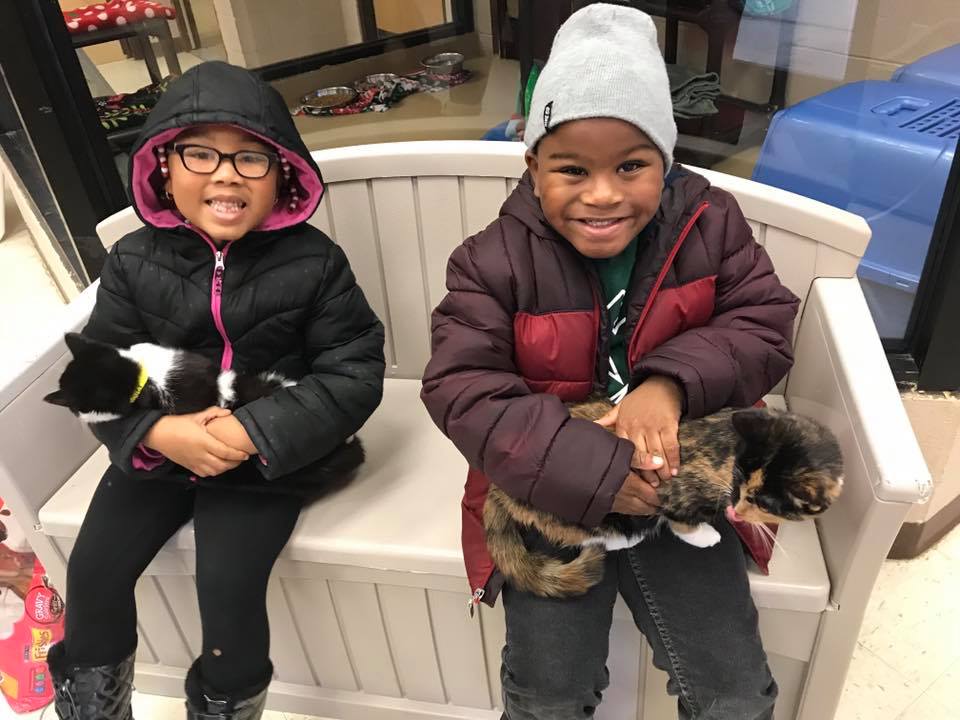
Counties throughout the state have programs to control potentially harmful animals. The public health department may spray for mosquitoes or poison rats. Many cities and counties also have animal control departments to deal with wild or abandoned animals. Voluntary animal protection societies often partner with local government to operate shelters for stray animals and to encourage responsible pet ownership.
Historic preservation programs identify and protect buildings and areas that have special significance in a community. These programs encourage pride in the community and its heritage. These programs also prevent old buildings and neighborhoods from becoming run-down and help renovate those that are decaying. Local governments support historic preservation in several ways. Many governments have sponsored building inventories to identify and describe buildings of historic or architectural interest. Publication of such inventories encourages the owners of listed buildings to maintain them or even restore them to their original appearance.
Local governments can also provide incentives for maintaining and restoring historic buildings. Banks or other local companies join with local governments in support of historic preservation or other efforts to prevent deterioration or to encourage restoration of neighborhoods. Sometimes buildings are in such poor condition that they are beyond repair and unsafe to use. Local governments can buy these buildings and demolish them to remove the hazard.
Hickory Historic Preservation
Many local governments create historic preservation commissions, which are made up of citizen volunteers appointed by city council, to help oversee historic preservation efforts. Hickory’s 12-member Historic Preservation Commission is made up of a variety of residents that fill specific roles—such as owners of historic properties, building trades professionals, and a youth council representative—as well as “at large” members (residents that are simply interested in serving but don’t fill one of the designated membership categories). The commission meets monthly and oversees ongoing programs such as a downtown walking tour and historic district plaque program, as well special projects such as a historic properties survey conducted in 2015. Volunteers serving in this way can greatly expand or enhance local government’s efforts around historic preservation. Other community-improving efforts headed up by similar volunteer bodies include greenway preservation and downtown beautification.
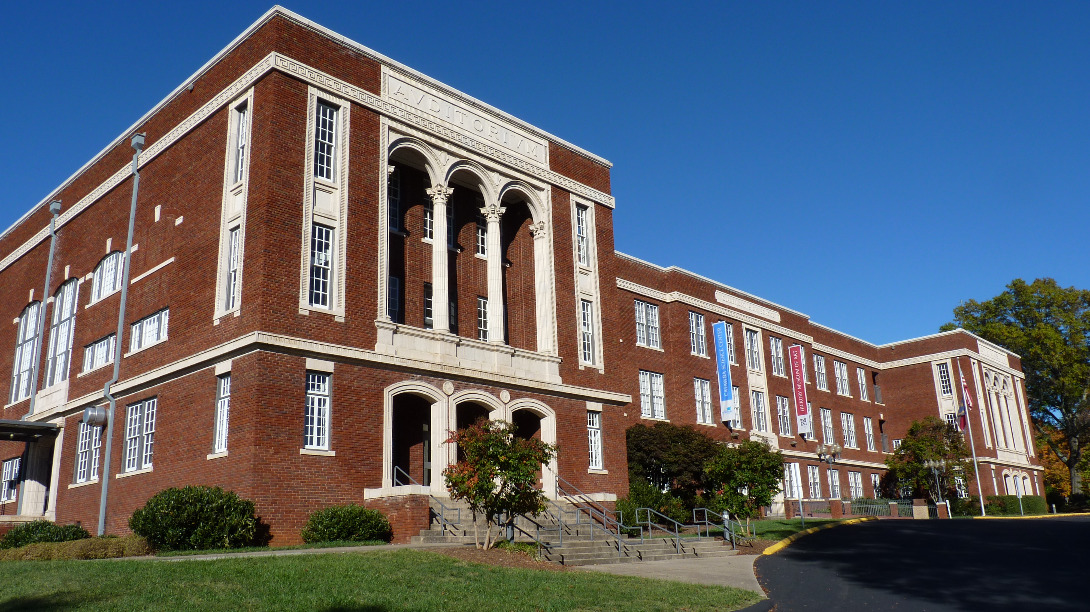
Government beautification programs include planting trees and flowers and installing public art displays, flags, and holiday decorations. Efforts like these are often paid for by counties or municipalities and carried out by government employees or volunteers. Sometimes, however, the government might hire a private company to do the work or assign the work to people who have been ordered by the courts to perform community service.
Local governments also encourage garden clubs and other civic organizations to help with community beautification and litter control. The general public can be encouraged to help through campaigns that publicize the benefits of an attractive community and urge people to “pick up, paint up, fix up.” Much of the work to improve the physical condition of a community is done by volunteers who give their time and effort to make their neighborhoods safer and more attractive. Contests to see who can pick up the most litter or produce the most beautiful flowerbeds provide a way to recognize outstanding efforts.
Improving the Community’s Economic Condition
Local governments are interested in attracting and keeping businesses in their communities because businesses pay taxes and provide jobs for residents. The people in a community need jobs to earn income and taxes paid by businesses can help reduce the taxes residents have to pay to support local government. For these reasons, many local governments seek to strengthen their community’s economy.
To make a community more attractive to businesses and industry, local governments use a wide range of techniques, including
- preparing property for development by installing water lines, sewers, and roads;
- constructing buildings;
- offering low-interest loans; and
- coordinating job training with schools and colleges.
Many cities and counties support economic development by helping fund the local chamber of commerce. Chambers of commerce provide information about communities to people who may be interested in doing business there.
Cities often focus economic development efforts on downtowns or other areas with empty buildings, and in so doing they may seek partnerships with counties, other cities, or local business or nonprofit groups. More than 75 North Carolina counties and cities have formed economic development commissions. These commissions collect information about the local economy and workforce, advertise the advantages of their communities, and help businesses organize the support they may need from local government and others. For example, the economic development commission may work with businesses, local schools, and community colleges to help the schools and colleges develop training for jobs the businesses have available. Sometimes economic development commissions work with a business development corporation to create an industrial park or to revitalize the downtown.
Because tourism is a major part of the economy in many parts of North Carolina, some cities and counties dedicate considerable efforts to make their communities more attractive to tourists. Tourism is especially important to the economy of the mountain and coastal regions of North Carolina. Additionally, all of the largest cities in the state actively seek to host conventions, adding another aspect to the tourism industry.
Special efforts to promote tourism include festivals, like Wilkesboro’s “Merlefest,” and outdoor dramas, like Manteo’s “Lost Colony.” Advertising is important, too. Websites, brochures, and tourist-oriented maps identifying interesting places and events are often used to entice visitors. Most communities support a local visitors bureau, which promotes local tourism. These organizations tend to represent multiple jurisdictions, such as the Chapel Hill/Orange County Visitor’s Bureau, which also includes information about Carrboro and Hillsborough. Coliseums, stadiums, museums, and arts centers also attract tourists. Cities and counties support these places, at least in part, for the tourist business they generate.
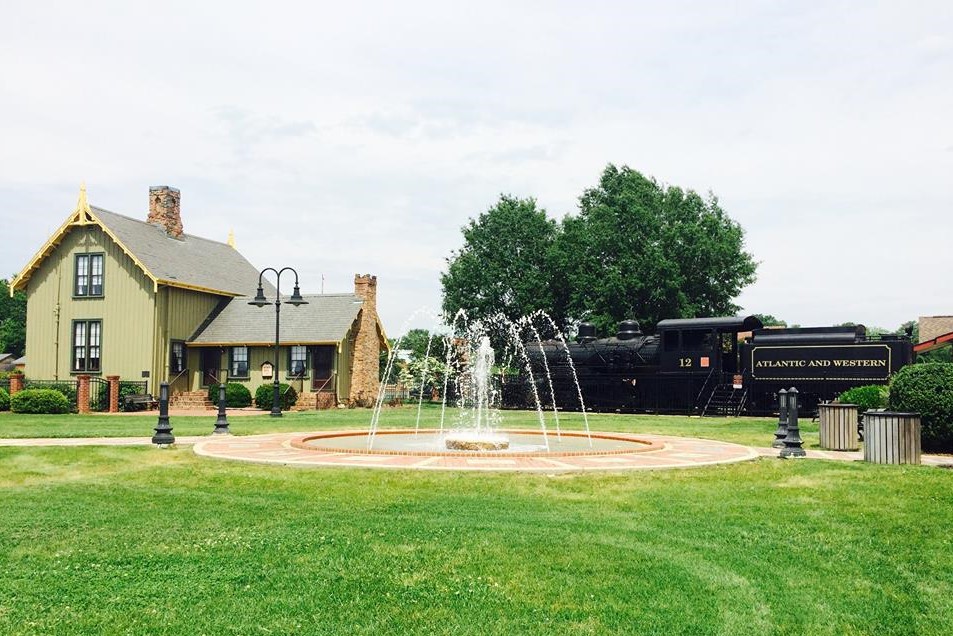
Historic sites are major tourist attractions throughout North Carolina. One benefit of historic preservation programs is that they help develop and maintain areas of historic interest to tourists. Similarly, community beautification, recreation, and arts programs that local governments support for the benefit of their own residents frequently attract tourists as well. These same features may also help attract new businesses and industries.
Quality user-focused services also contribute to economic development. An abundant supply of clean water, sewage disposal capacity, good police and fire protection, good schools, and other public services that support a high quality of life are important to business and industry leaders who are looking for new locations for facilities.
Downtown Renovation in Sanford
Because downtown Sanford had many empty and dilapidated stores, Sanford City Council approved a plan that included $400,000 of investment in improving the downtown area. The investments funded parking upgrades, streetscaping, road improvements, and new signs. The city worked with Downtown Sanford Incorporated (DSI), a nonprofit organization created in 1984 as part of the Main Street program of the National Trust for Historic Preservation. In 1997, with the city’s support, the DSI volunteer board created a plan to encourage businesses to locate downtown. The combined efforts of the city and DSI volunteers, which included the construction of Depot Park in 2001, helped the downtown flourish as businesses located there. In 2018 downtown Sanford won the North Carolina Main Street Center’s Best Outdoor Space Improvement Award. This is one of many examples of municipal governments investing in renovations to downtown areas to spur economic development. Programs such as the North Carolina Main Street Center, created by the N.C. Department of Commerce, help local governments work with community members to make their downtowns more vibrant, lively, and attractive to business development.
Improving Social Relationships in the Community
Local governments also work to improve social relations in their jurisdictions. Some have countywide or citywide programs to promote understanding among different racial, ethnic, or religious groups and to encourage fair treatment of all people in the community. These efforts are often organized through a human relations commission. Another approach concentrates on improving relations among people in a particular neighborhood. Local governments support these efforts through community action agencies, neighborhood or residents’ associations, or even through police community-relations offices. Cities and counties also sponsor street fairs, concerts, and other opportunities for people from throughout the community to gather and interact with each other.
Human relations commissions were established primarily to find ways to ease racial tensions and to eliminate racial discrimination. Even though civil rights have been greatly expanded throughout the United States, the reality is that racial and other forms of discrimination and prejudice continue to affect relationships among North Carolinians today.
Human relations commissions hold public meetings to discuss potential problems among different racial and ethnic groups. Much of their work entails encouraging people of different races or even different points of view to talk and listen to one another. These volunteer committees of residents can help people realize that cultural differences do not need to be threatening or divisive and can play an important role in promoting community harmony and cohesion.
In recent decades, new immigrants have come to North Carolina, especially from Latin America and Asia. In fact, since 2000, North Carolina has had one of the fastest-growing Spanish-speaking populations in the United States. According to the U.S. Census Bureau, as of 2017, North Carolina was home to over 800,000 foreign-born people, nearly eight percent of the state’s total population. About half of the foreign-born population living in North Carolina emigrated from Latin America. Sometimes immigrants are the subject of discrimination or abuse by others who fear or resent them because of their race, origin, or language.
Human relations commissions also deal with problems of intolerance and discrimination based on religion, gender identity, or sexual orientation. For example, there is a growing variety of religious affiliations in North Carolina. Protestants remain the largest group, but there are also Catholics and people of other Christian denominations, as well as Jews, Muslims, Hindus, Buddhists, and those of other or no religious affiliation living in the state. Human relations commissions try to help promote people’s understanding of religions other than their own and to prevent acts of religious discrimination.
History of Racism in North Carolina
The history of North Carolina involves European settlers fighting with Native Americans for control of the land. Some Europeans began to bring captive Africans here as slaves. Myths about differences between races and attitudes about European superiority began during the Native American wars and during times of slavery.
The Civil War ended slavery, and in 1870 the Fifteenth Amendment to the United States Constitution extended voting rights to all male citizens 21 and older, regardless of “race, color, or previous condition of servitude.” For the next few years, African Americans were able to vote as the Constitution permitted. In 1890, more than 1,000 black North Carolinians held office, but some white leaders feared an alliance between black voters and poor white voters. To prevent that alliance, some white leaders stirred up racial fears among whites and pushed racial segregation. The segregation laws were called “Jim Crow” laws (named after a negative caricature of African Americans popular at the time). By the end of the nineteenth century, the North Carolina General Assembly had devised means of keeping most nonwhite men from voting, and the federal government refused to enforce the Constitution.
Public facilities–schools, parks, even water fountains–were segregated. Whites and non-whites were not allowed to use them together, and the facilities available to non-whites were often greatly inferior to those local governments provided for white people.
Not until the 1960s did African American and Native American North Carolinians regain their basic civil rights, including the right to vote. Federal voting-rights laws ended poll taxes and other practices used to keep people from voting. Only then did segregation end and public facilities become racially integrated.
NCPedia provides information about the history of the Civil Rights Movement in North Carolina. To learn more about the struggle for civil rights, visit a destination within North Carolina on the Civil Rights Trail.
Many white North Carolinians supported ending segregation and assuring civil rights and equal access to public facilities for all North Carolinians. However, some whites continued to fear African Americans and Native Americans and felt superior to them. At the same time, some African Americans and Native Americans continued to resent whites because of a long history of discrimination and mistreatment.
Native Land Map
North Carolina is home to eight Indian tribes and four urban Indian organizations. The website of the UNC American Indian Center offers information about these communities. The Native Land Map is an interactive online resource to find out more about local indigenous territories and languages. Scan this code with the Metaverse App to open an AR experience.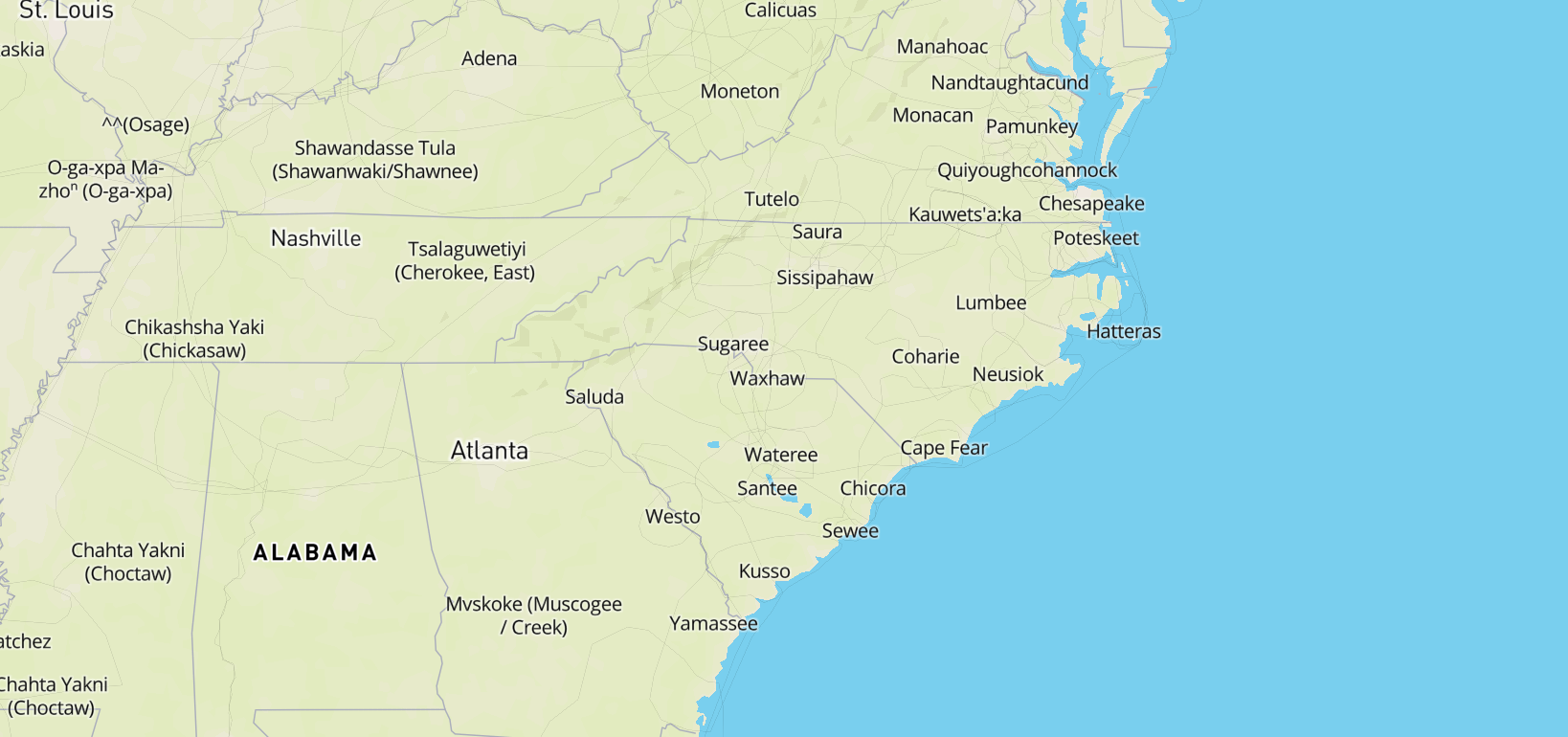
The history of racism and prejudice in North Carolina is part of the larger American story, and certainly these issues have not been resolved. While local government facilities and services are open to all, many local governments still grapple with racial tensions and the legacy of segregation. These struggles manifest themselves in issues of housing and economic development but perhaps most acutely in law enforcement – community relations.
Preventing Crime in the Community
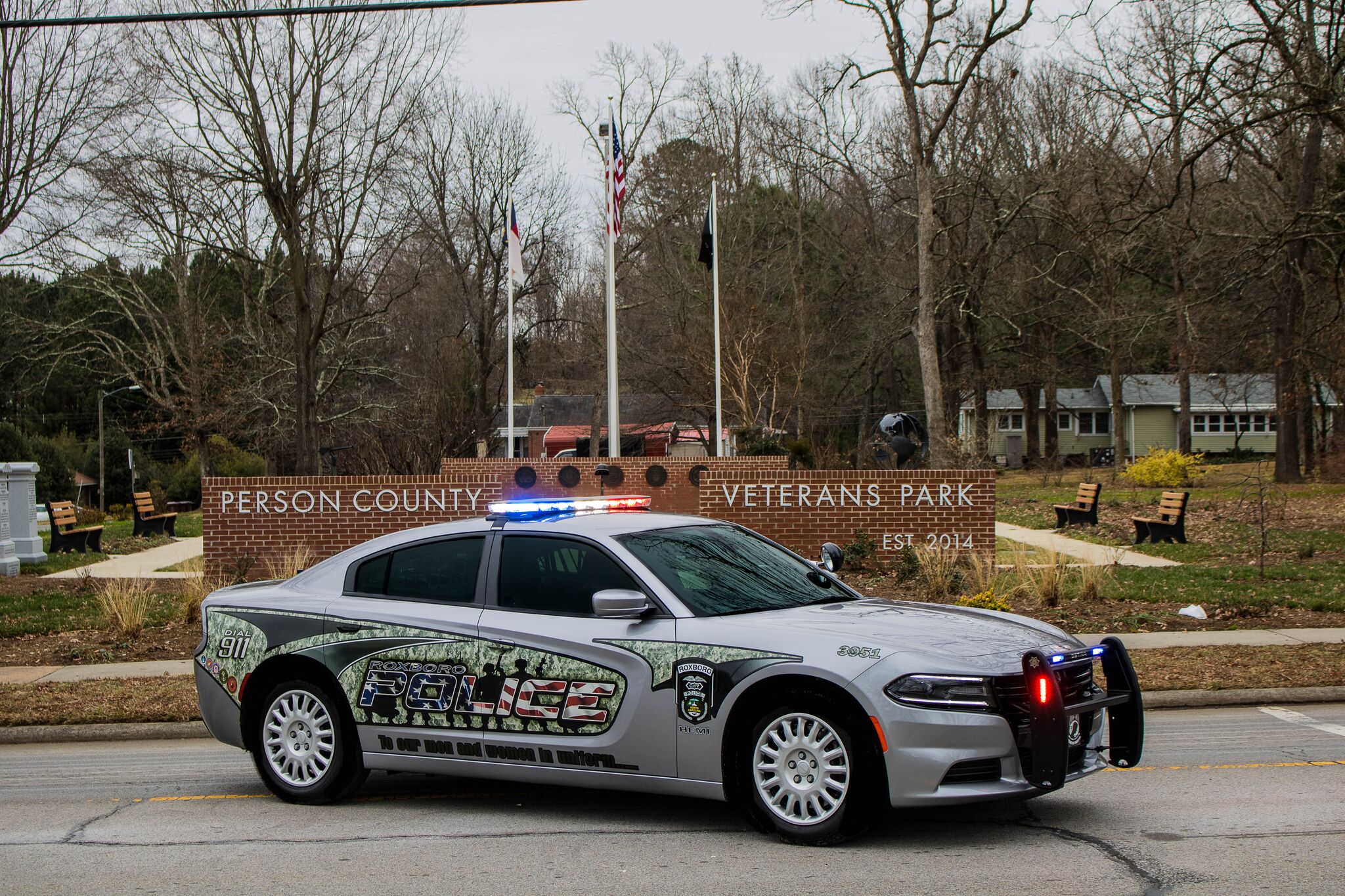
Crime prevention and remediation are two of the primary functions of local governments. Many police activities are intended to help prevent crime. Police patrols (usually by car; sometimes on foot, bike, or horse) help discourage crime by making police visible throughout the community. Police sometimes concentrate their patrols in areas where there have been frequent reports of crime. In addition to patrols, police attempt to prevent crime by informing people about ways to protect their property and themselves. Police also help people learn nonviolent means to solve arguments and find ways to avoid getting involved in criminal activities. After all, police cannot be everywhere at once. Crime prevention depends on the entire community.
Police can also encourage neighborhood cooperation. Many police departments have community policing programs, in which they meet with neighborhood groups to discuss public safety. Police officers introduce themselves to residents and store owners. They ask what they can do to help make the neighborhood safer.
Greensboro Police Neighborhood Resource Centers
In 1989, Greensboro’s police department established Police Neighborhood Resource Centers in the city’s public housing communities. Each of these police mini-stations have officers permanently assigned there. The officers patrol the housing communities on foot and get to know the residents. In addition to criminal investigations and emergency response services, these officers help residents get the social services and health services they need. Some services are even provided right in the mini-station. The officers also organize recreational opportunities for neighborhood youth. These efforts by the police department help build residents’ trust of each other and with the police, increasing residents’ willingness to report crimes, ask for police assistance, and assist the police. Increased cooperation with the police reduces crime and makes the neighborhoods safer for all the residents.
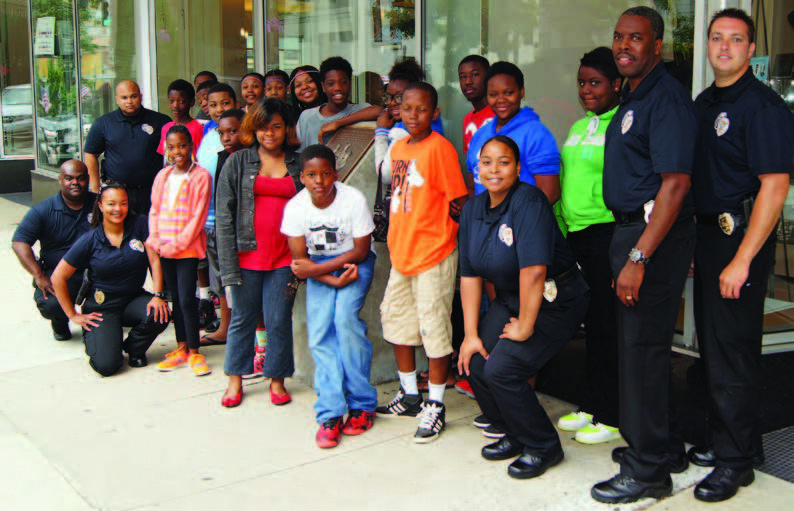
Other local government departments and community organizations may also work with neighborhood residents to help build trust and a sense of responsibility. Crime and other social problems are often greatest in areas where people do not trust their neighbors or do not believe that they can or should do anything for each other. Community Action Programs and other neighborhood-based organizations help people work together on projects to benefit the neighborhood. Residents’ councils can promote cooperation and improvement in public housing or help fight youth drug abuse.
While local law enforcement agencies work hard to keep communities safe, often with positive collaboration with residents, high-profile national cases of racially-based police misconduct, combined with the state’s history of racial injustice, create a difficult environment for trust-building. Many police and sheriff departments are proactively working in their communities to promote better law enforcement-community relations and specifically to enhance trust with minority residents. Working to build trust community-wide is a major effort of modern local law enforcement agencies across the state.
Deciding What Is Better for the Community
Proposals for public programs to improve the community are usually presented long before any action on them is taken. Often, an initial discussion at a meeting of the city council or board of county commissioners introduces a proposal to both elected officials and the public. Proposals may be developed by the city or county manager, by other staff members, by appointed advisory boards, by elected officials, or by private citizens.
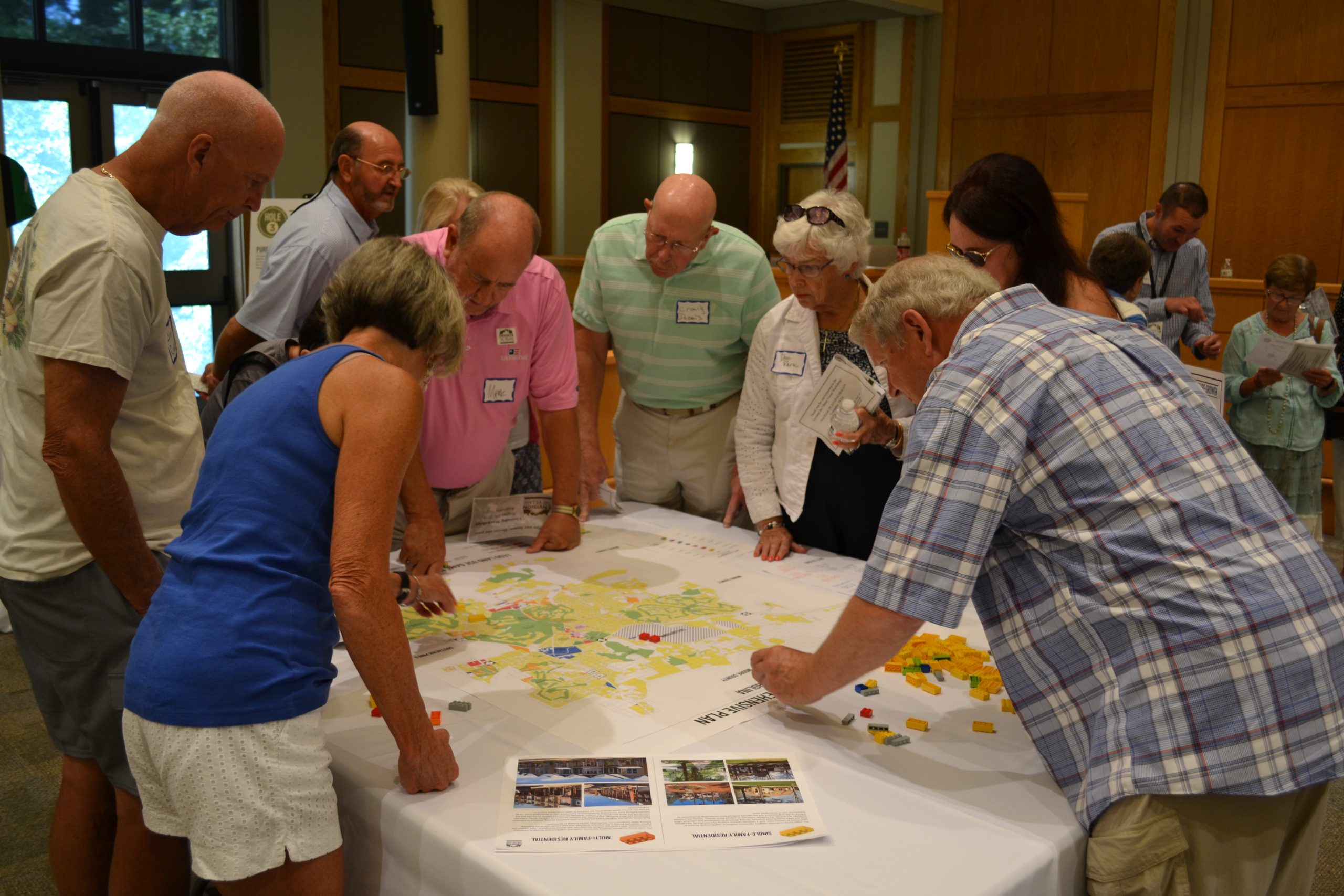
Social and news media both play an important role in spreading word about new proposals to the public. A citizen’s blog or reporter’s story can inform large numbers of people about an issue or proposal for government action. Groups of people with similar interests may also pay particular attention to the topics discussed by the governing board and alert their members when an issue of particular concern comes up. For example, the local real estate agents’ association and environmental protection groups, like the Sierra Club, might both be interested in a proposed change in drainage ditches, although for different reasons. The real estate agents might support the plan in order to protect buildings or to create more building sites. On the other hand, the environmental protection groups might oppose the plan because they fear it would harm wildlife or water quality.
People who favor or oppose a proposal can express their concerns about it in various ways. They may write blogs, send letters to the editor of their local newspaper, or give interviews to television reporters. They may speak to, text message, or use Twitter to interact with friends and others with whom they share common interests. They may speak at public meetings or talk to the city or county manager or other government staff members. Most importantly, however, they must communicate their concerns to members of the local government’s governing board.
The elected representatives on the governing board have the authority and the responsibility to decide whether to approve the proposal. People call or write their elected representatives and present petitions signed by many voters to express their opinions about a proposal. Social media make it possible to contact many people quickly and mobilize them to attend a meeting or send emails to public officials.
According to North Carolina’s Open Meetings Law, the governing board’s meetings must be open to the public. Thus, reporters can cover the debates and publicize the arguments for and against proposed programs. Proponents and opponents can attend these meetings and express their opinions to elected officials during the public comment period.
Often, proposals are changed to reflect the concerns of opponents while continuing to meet the most important objectives of the proponents. Sometimes elected officials are unable or unwilling to adopt a program that pleases everyone. Opponents who feel strongly about a planned program may continue to try to prevent it even after it has been adopted. They might file a lawsuit, asking the courts to stop work on the program. Or they might campaign against elected board members who voted for the program, hoping to elect others who will vote to stop the program. Those who championed the proposal are likely to continue their interest in it and support the members of the board who voted for the plan.
Once the governing board has authorized a program, local government employees begin to carry it out. Many approaches to community betterment also require active public cooperation to succeed. The organized cooperation of businesses, community groups, schools, and other parts of the community is very important for many community improvement activities. For example, programs designed to encourage people to fix up their property, pick up litter, or work with their neighbors to improve community relations all depend on community member participation to succeed.
Take Action
✔ Identify volunteer opportunities through your local government. Is there information on county and municipal websites about volunteer opportunities?
✔ Find other ways you can learn about volunteer opportunities with local nonprofit organizations.
✔ Identify ways in which your local government(s) are beautifying your community. Can you find public art installations? Landscaping? Community gardens? Streetscape improvements?
✔ Does your community have a historic district? If so, take a walking tour and find out more about historic buildings in your community.
✔ Find out about organizations involved with economic development in your community. Is there a chamber of commerce? Are there economic development officers that work for your municipality and/or county? Is there a downtown business organization? What can you find out about economic development efforts in your community?
✔ Find out about efforts in your community to combat discrimination based on race or other differences. How might you and your friends become involved in their work?
✔ In what ways are your local police departments and/or sheriff’s office working to build positive relationships in the community? Is there a formal community policing program? A citizens police academy you could attend?
✔ Attend a county or municipal board meeting and note how the public comment period is conducted. How many people spoke? What topics did they speak about?
people who donate their time and effort
efforts to reduce runoff of rainwater or melted snow into streets, yards, and other locations in order to protect or improve water quality; an important environmental service of many local governments that contributes to community well being
activities to create new jobs and additional sales and other business
a group of business people formed to promote business interests in the community
a committee created to advise and assist local governments in economic development efforts; sometimes set up as a nonprofit organization while other times they serve in an advisory capacity to government departments
a group of people legally organized as a corporation to encourage economic development
organizations—usually nonprofit—that promote or market specific destinations; usually funded primarily by local governments through tourism-related tax revenues (lodging and restaurant taxes)
an advisory group of resident volunteers, appointed by a city or county governing board, whose mission is to promote human relations within a community; these efforts include promoting human rights, equal opportunities, mutual respect, and understanding within a given community
tax people had to pay in order to be allowed to vote
a request for government action signed by a number of voters who support the same request
one who is in favor of something
one who is against something
a time period set aside in public meetings of government bodies where residents can speak to the governing body and contribute to the public record; legally required for local government governing boards in North Carolina

